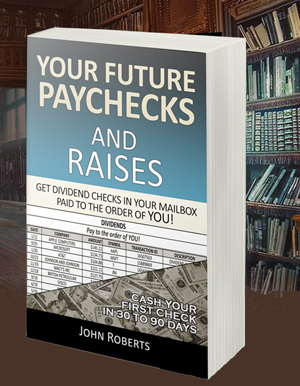How To Stop Losing Money In The Stock Market
With the markets moving up and down these days, we want to protect ourselves and try to keep from losing our money when things start going south.
So one way we keep our money is we “stop” our losses. This activity is actually called setting a stop loss, so that’s a new term for you here.
In order to set a stop loss, we actually decide, up front, when we buy a stock, how much we are willing to lose before we throw in the towel and sell it.
This is the best time to do this because we have no money on the table yet, so we are more objective.
Let me say that another way. When you have bought a stock, i.e. you have money on the table, it’s emotional. So the idea here is to get the emotions out of the process before we buy the stock.
So lets talk about stop losses. (Actually, we are going to use something called trailing stop losses, but lets get the stop loss concept down first).
A good stop loss percent to use is 25%. This means if you invested $1000 in a stock, and it went down by $250, so it was worth only $750, you sell it and take the $250 loss.
Why 25% you ask? Well, some credible research and back testing has shown that stop losses in the 21% – 27% range have yielded the most efficient results as far as protecting investments.
Setting the stop losses too thin, say 10%, caused people to stop out of investments too often, only to see them turn around and go higher. And wider stop losses, say 40% to 50%, allowed too much loss before bailing out of a stock in a downward trend.
Simple enough, right? Let me caution you about that. Here’s another one of those, “it’s simple, but it ain’t easy.”
Because you will want to hang on to that stock. You will think, well maybe it will come back up to $1000, and I won’t lose any money. Every molecule in your body will be screaming to hang on to that stock, and not take the 25% loss – because you just know it will come back up.
Don’t do it. Here’s what can happen.
The stock may go on down by 35%. You still have hope so you hang on. Then it’s down by 50% — now you’ve just got to hang on because you’ve lost half your money and you want to recover it.
Then it’s down 75%, and you are so depressed you don’t know what to do. It keeps going down. Now you’re down 90% so you think, well, I might as well keep it, I’ve lost most of my money.
You are correct about part of that. You have lost the money. You broke rule number 1 (rule number 2 also, come to think of it). Looking back on it, you really, really, really wish you had sold it when it was only down 25%, right? That 25% loss doesn’t look so bad now.
So don’t let this happen to you. Be smart, and if your stock goes down 25%, get out while you still have 75% left.
So those are the basics of stop losses. But we are going to do an even smarter kind of stop loss than I just described. We’ll do something called a trailing stop loss. This helps you lose less and even bail out at a profit some times. Stay tuned and I’ll tell you about them in my next post.
Because trailing stop losses are what I use.
To your health and prosperity – John



